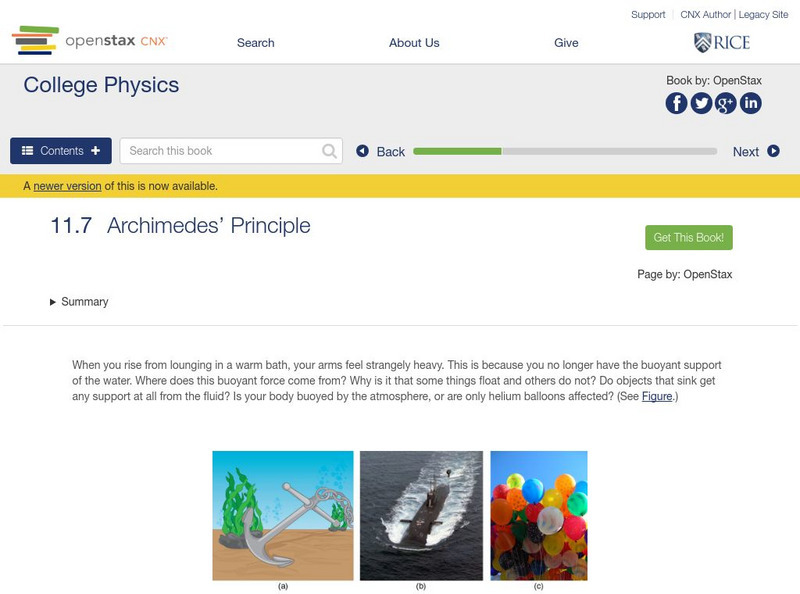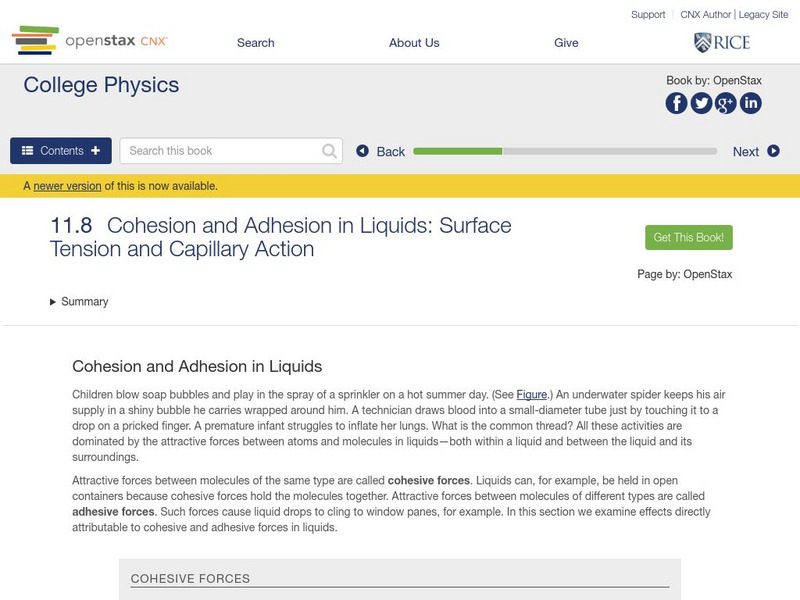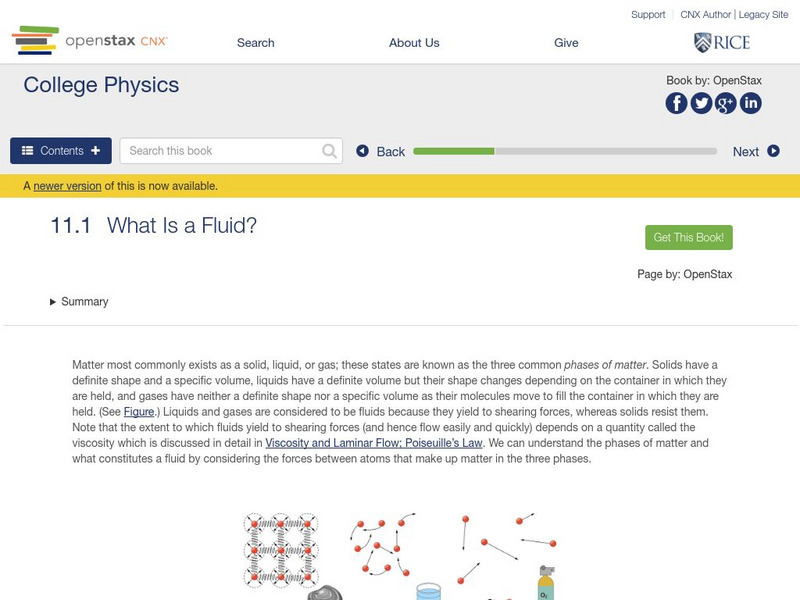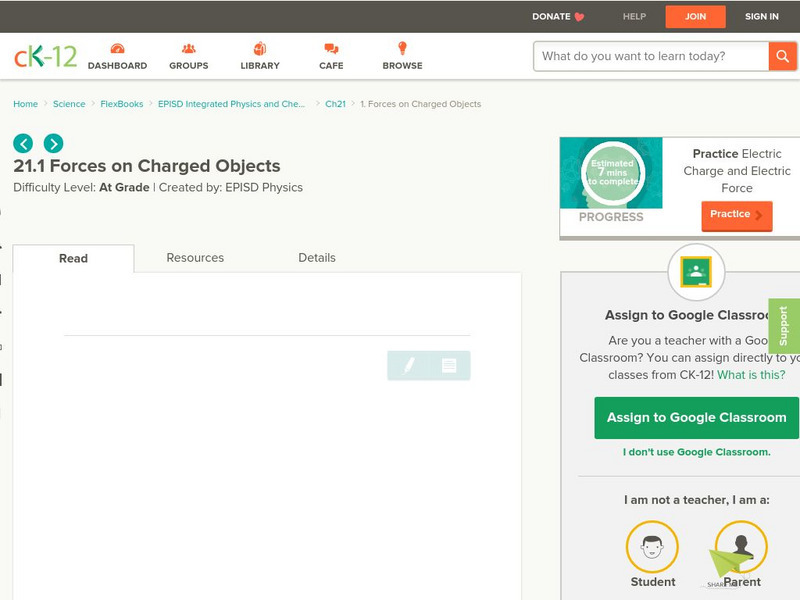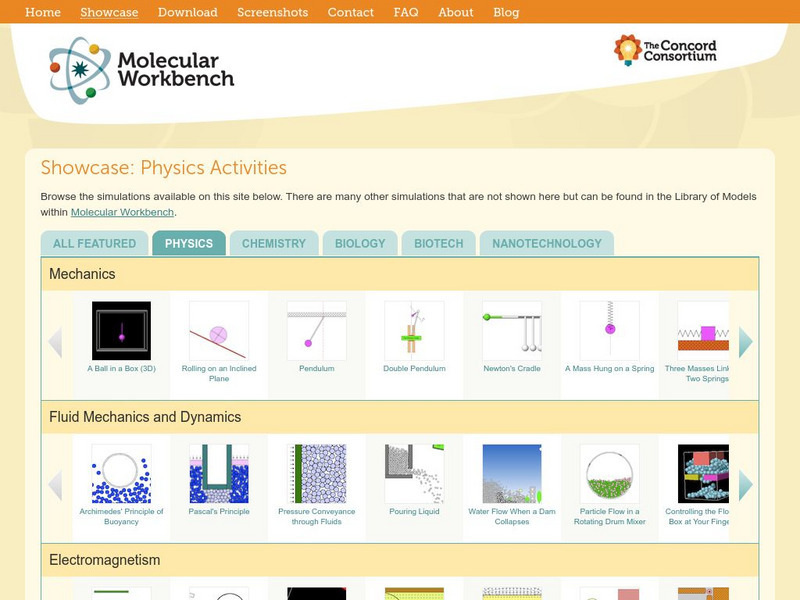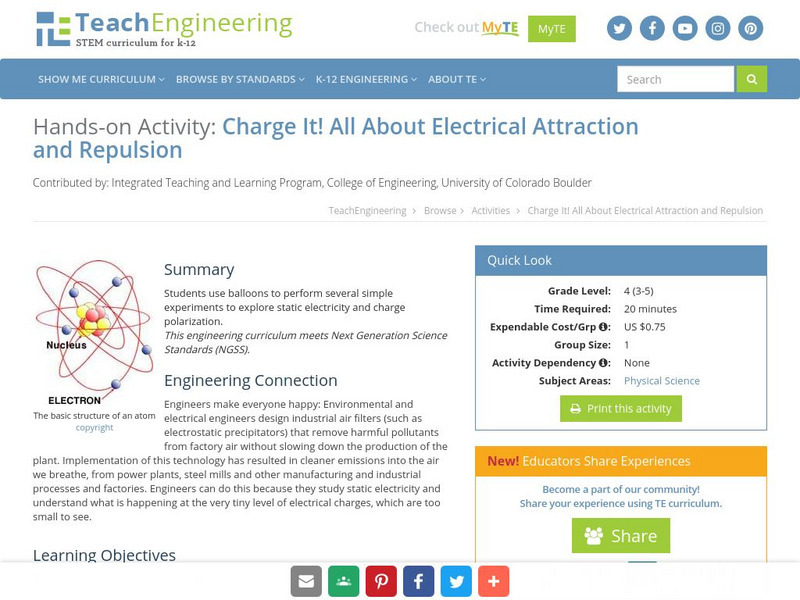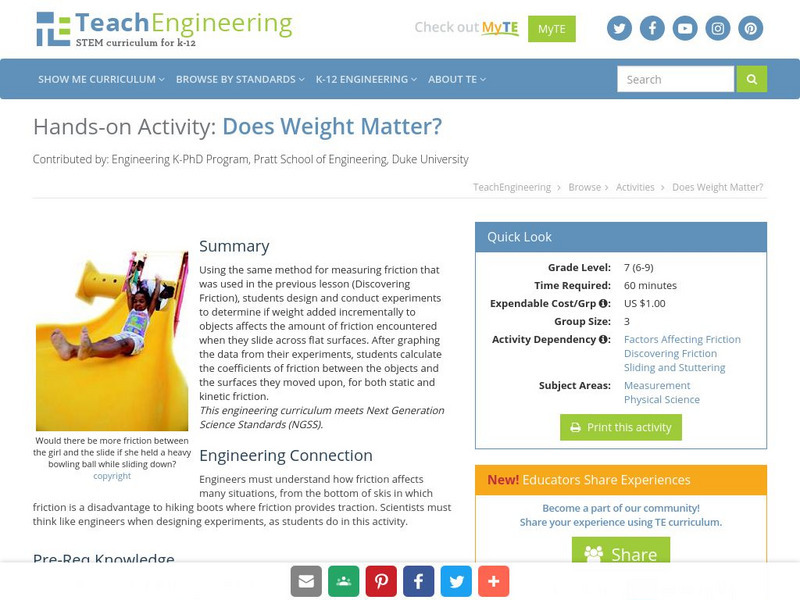OpenStax
Open Stax: Density
From a chapter on Fluid Statics in a Physics textbook. This section of the chapter defines density, explains how to use a known density to find the mass of a substance, and compares different densities. Includes examples, questions,...
OpenStax
Open Stax: Physics: Archimedes' Principle
From a chapter on Fluid Statics in a Physics textbook. This section of the chapter provides a detailed discussion of Archimedes' principle, buoyant force, floating and sinking, and the role of density. Includes questions, problems and...
OpenStax
Open Stax: Cohesion and Adhesion in Liquids: Surface Tension and Capillary Action
From a chapter on Fluid Statics in a Physics textbook. This section of the chapter describes the cohesive and adhesive forces in liquids, the role of cohesion in the surface tension of liquids and bubbles, and how capillary action works....
OpenStax
Open Stax: Pascal's Principle
From a chapter on Fluid Statics in a Physics textbook. This section of the chapter looks at Pascal's principle and its applications, and how forces in a hydraulic system are related. Includes problems and exercises.
OpenStax
Open Stax: Pressure
From a chapter on Fluid Statics in a Physics textbook. This section of the chapter defines pressure and how it relates to force, as well as how to find the amount of force given area and pressure. Includes questions, problems and...
OpenStax
Open Stax: What Is a Fluid?
From a chapter on Fluid Statics in a Physics textbook. This introductory section of the chapter covers the three common phases of matter, their physical properties, and how atoms are arranged in solids, liquids, and gases. Includes a...
OpenStax
Open Stax: Variation of Pressure With Depth in a Fluid
From a chapter on Fluid Statics in a Physics textbook. This section of the chapter looks at the relationship of weight, depth, density, and altitude to pressure. Includes questions, problems and exercises.
CK-12 Foundation
Ck 12: Forces on Charged Objects
[Free Registration/Login may be required to access all resource tools.] Students learn which subatomic particles contribute to static electricity, and determine the charge of an object based on what particles it has gained or lost.
Physics Classroom
The Physics Classroom: Static Electricity: Lesson 2: Charging by Friction
Understand how to electrically charge an object by friction with this detailed description. Classrooms will benefit by extending the lesson with the interactive opportunity and follow up for comprehension with the "Check Your...
Physics Classroom
The Physics Classroom: Static Electricity: Lesson2 Grounding Removal of a Charge
How do objects become grounded? Probe into the science behind "grounding" objects by removing an electric charge. Explore the Charge Interactive and test understanding with the three follow-up questions.
Physics Classroom
The Physics Classroom: Static Electricity: Lesson3 Charge Interactions Revisited
Gain insight and understanding of how charged objects interact with one another. Further comprehension with one or both interacivities about Coulomb's Law and Put the Charge in the Goal.
Physics Classroom
The Physics Classroom: Static Electricity: Lesson 3: Inverse Square Law
Electrical force between two electrically charged objects is inversely related to the distance between the two objects. Investigate why this becomes the inverse square law of physics. Engage in the Coulomb's Law interactive and check...
Physics Classroom
The Physics Classroom: Static Electricity: Lesson 2: Charging by Induction
Investigate how to charge objects by induction. Follow up with the suggested interactivity which helps drive home the concept of charging by induction and ends with a game. Test understanding of the concept with provided comprehension...
Concord Consortium
Concord Consortium: Molecular Workbench Showcase: Physics, Electromagnetism
Students can use these simulations to understand concepts in electromagnetism. Simulations are available on the following concepts: Lorentz Force, The Hall Effect, capacitor, conductor, transistor, cyclotron, static electricity....
TeachEngineering
Teach Engineering: Charge It!
Students use a balloon to perform several simple experiments to explore static electricity and charge polarization.
TeachEngineering
Teach Engineering: Does Weight Matter?
Using the same method for measuring friction that was used in the previous lesson (Discovering Friction), students design and conduct an experiment to determine if weight added incrementally to an object affects the amount of friction...
Other popular searches
- Understanding Statics
- Vectors and Statics
- Statics Engineering
- Math Statics
- Comprehension Statics
- Statics and Probability

